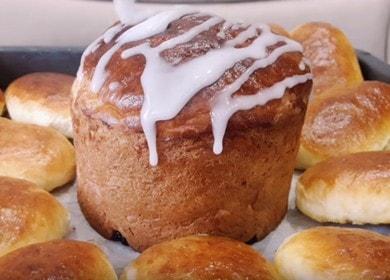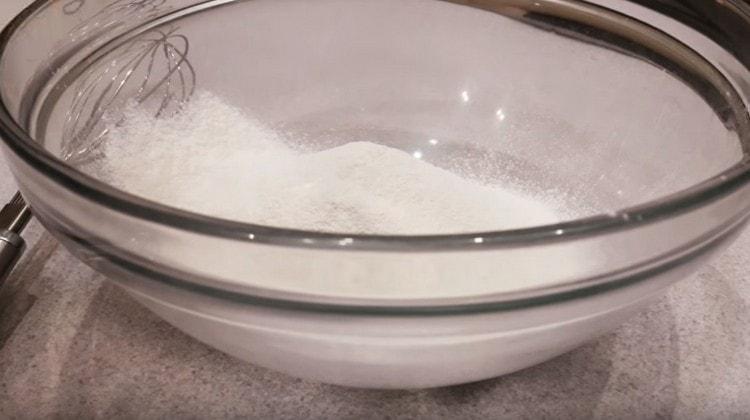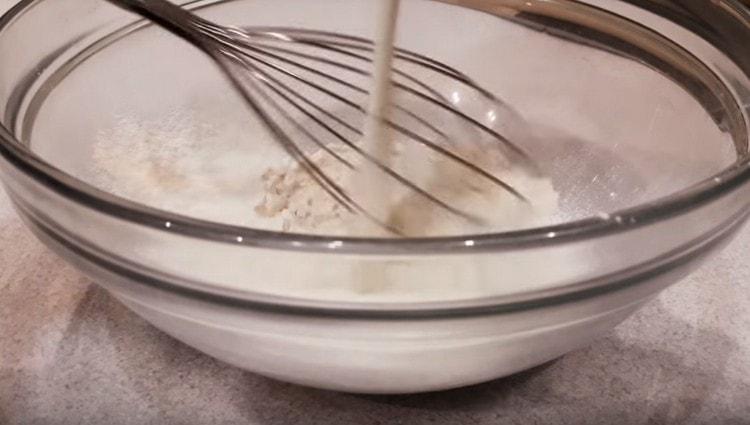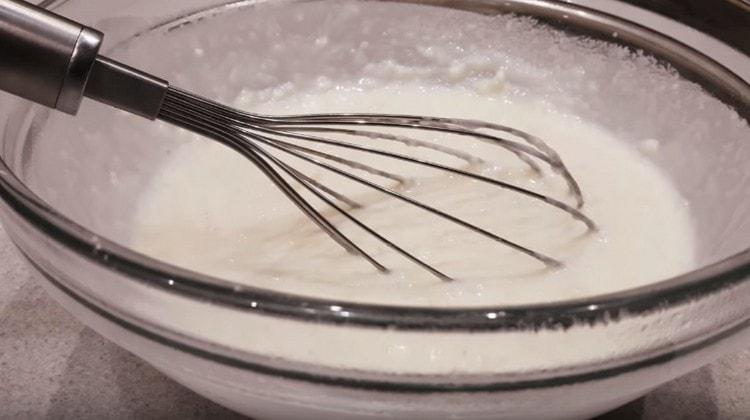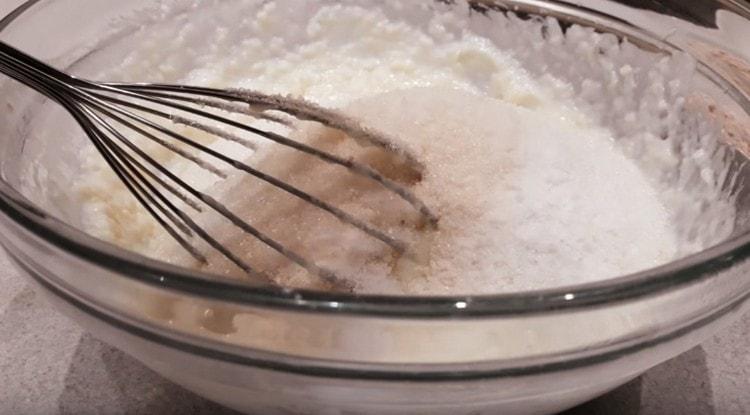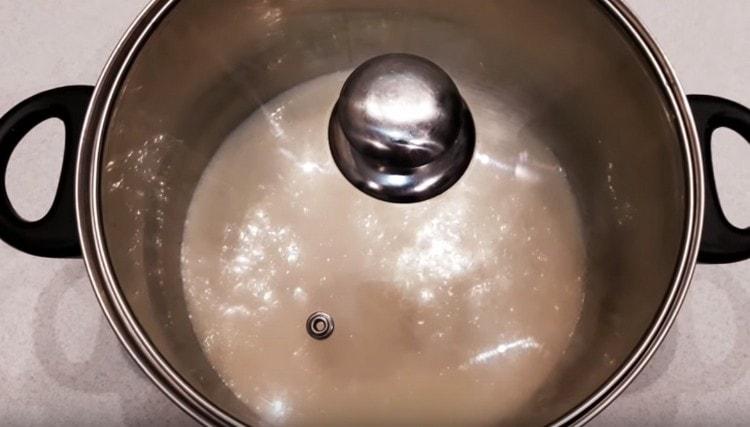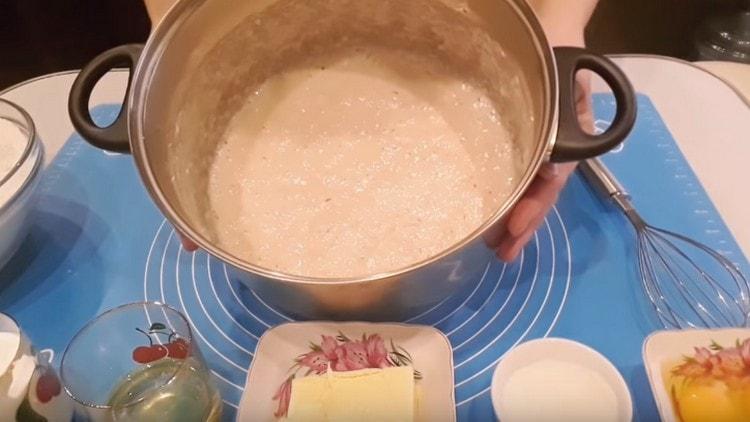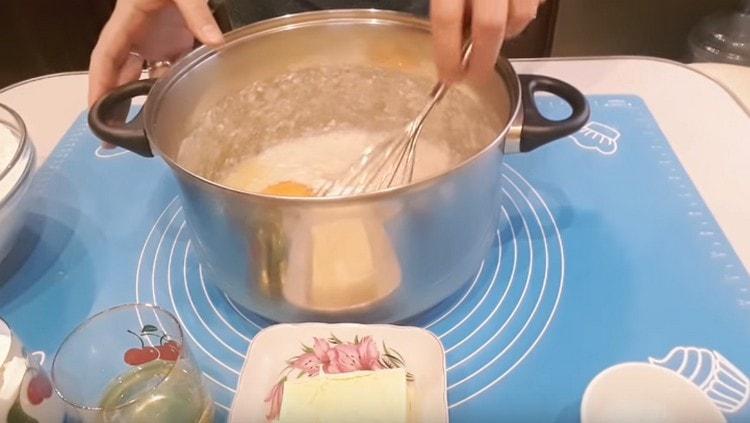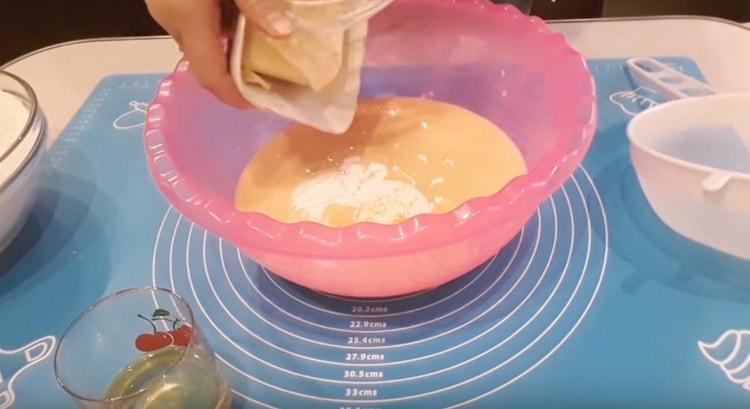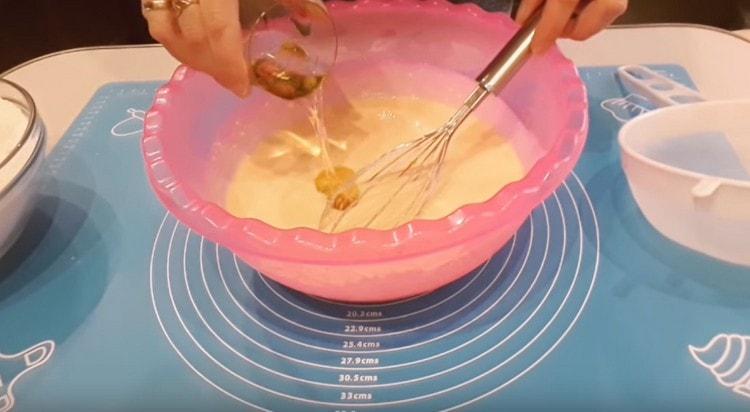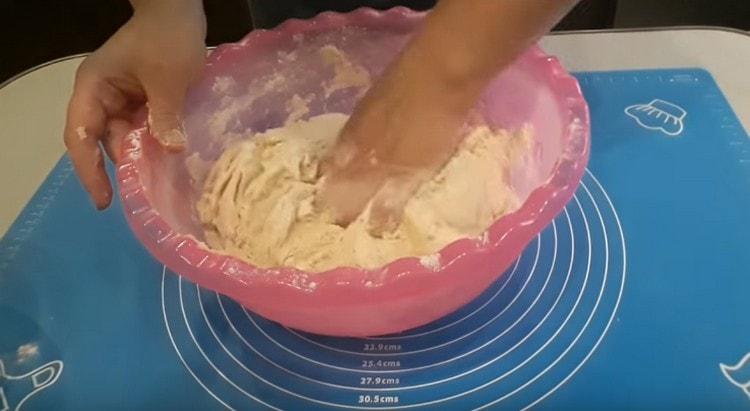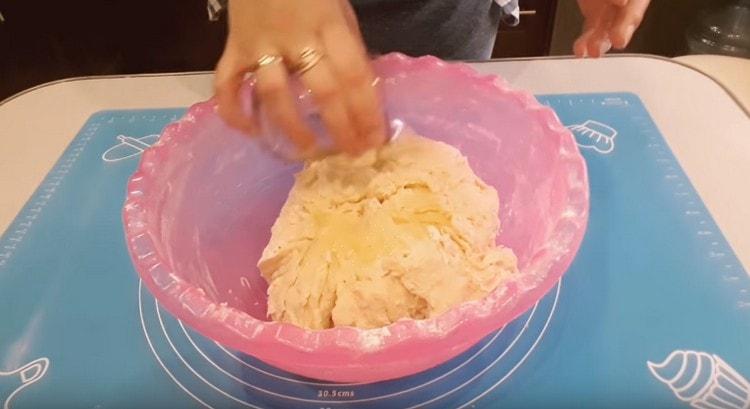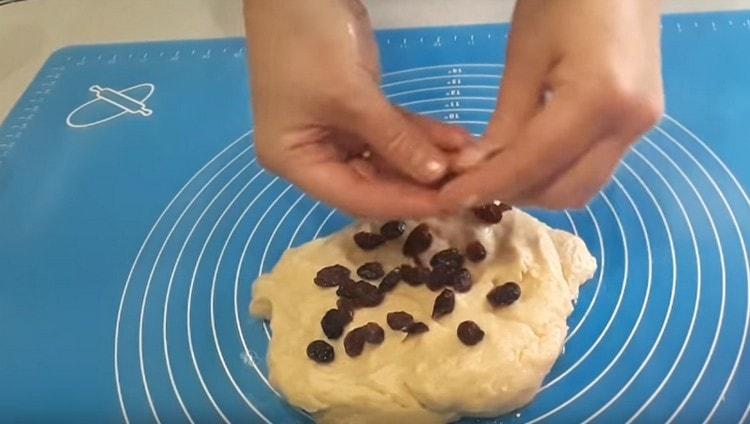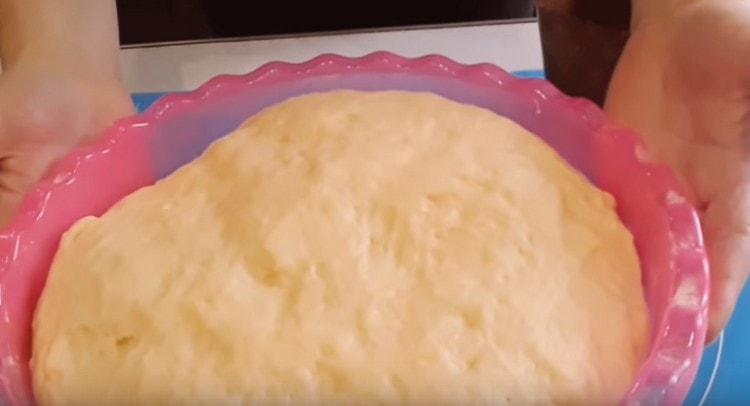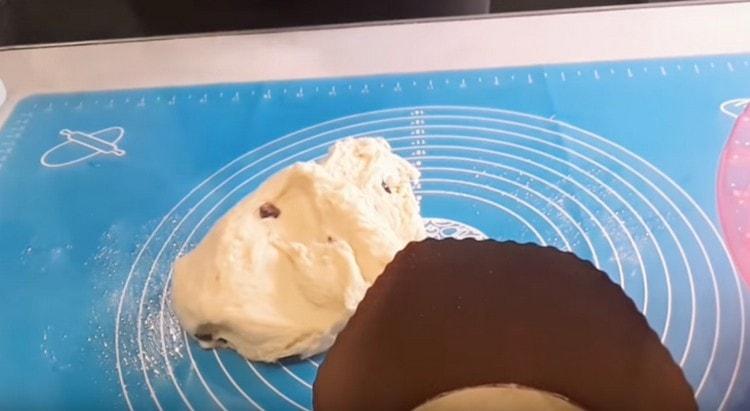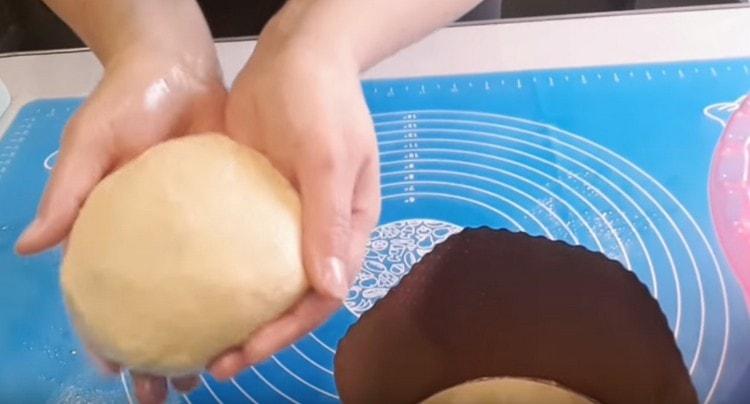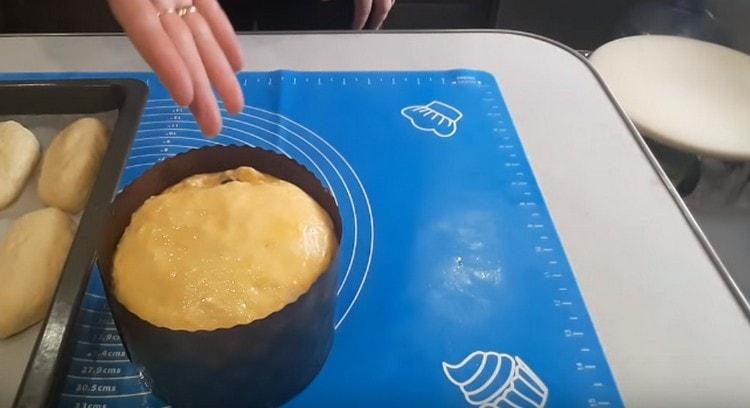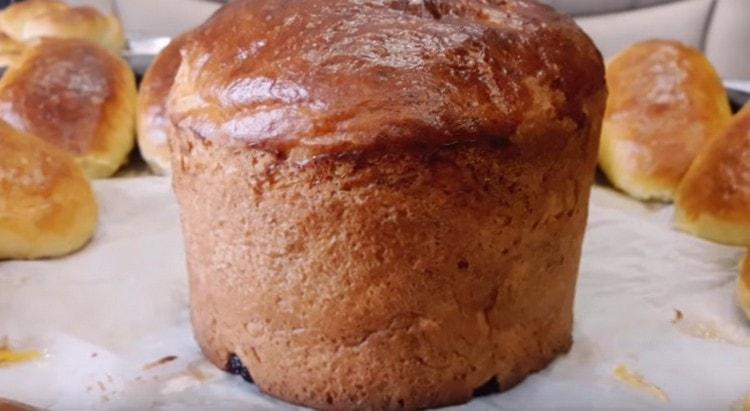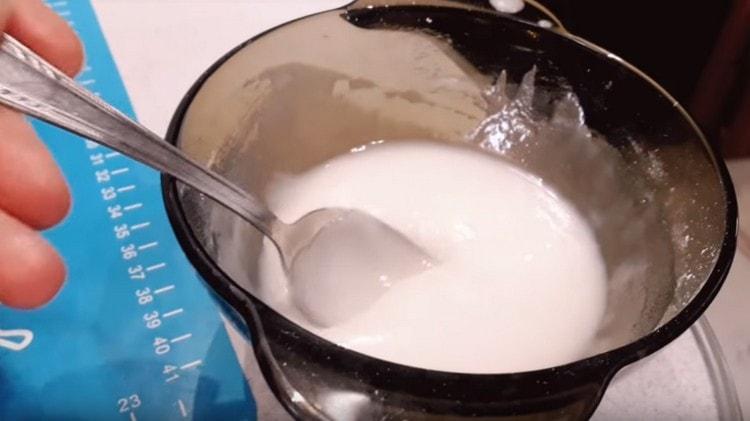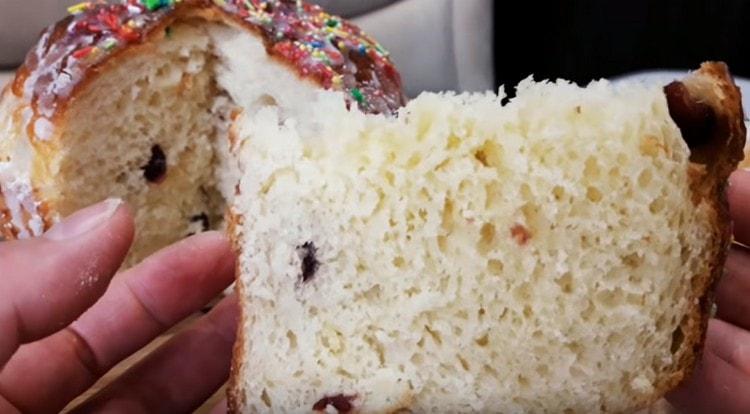Kitchen appliances and utensils:
- gas or electric oven;
- stove or hob;
- hand blender;
- 1 liter pan;
- deep capacity;
- sieve;
- fine grater;
- tablespoon;
- tea spoon;
- kitchen scales;
- beaker;
- 10 liter pan with a lid;
- cloth towel;
- cling film;
- wooden skewer;
- whisk;
- silicone brush;
- a bowl;
- pelvis;
- 4 forms for Easter cakes made of thick parchment;
- knife;
- dessert plate.
Ingredients
| Product | amount |
| Milk | 515 ml |
| Fresh yeast | 75 g |
| Flour | 1100 g |
| Granulated sugar | 10 tbsp. l |
| Room temperature butter | 120 g |
| Egg | 4 things. + 1 yolk |
| Refined Sunflower Oil | 115 ml |
| Salt | 1 tsp |
| Vanillin | 0.5 tsp |
| Sour cream 20% | 225 ml |
| Lemon | 0.5 pc |
| Candied cranberries | 4 tbsp. l |
| Powdered sugar | 150-170 g |
| Water | 4 l 20 ml |
Step cooking
Opara
- Sieve 100 g of flour into a deep container through a sieve.

- Pour 500 ml of milk into a liter pan, put on a small fire and wait for it to boil. Pour hot milk into a container with flour with a stream, without stopping stirring the brewing mass with a whisk.

- We cool the mass by immersing the container in a basin with 3-4 liters of cold water.

- When the dough has cooled, add 8 tbsp. l sugar, 1 tsp. salt and mix with a whisk until smooth.

- Pour 75 g of fresh yeast crushed into crumbs into a mass and stir until they are completely dissolved.

- Pour the dough into a 10 liter pan, cover and leave for 10 hours to rise.

Dough
- After 10 hours, open the lid, mix the mass so that it falls off.

- We break 4 eggs into a pair, add 2 tbsp. l sugar, 0.5 tsp vanillin, mix everything with a whisk until the sugar dissolves, after which we get rid of the lumps with a hand blender.

- On a fine grater, rub 0.5 lemon to get the zest. Pour the mass from the pan into a deep container, add 200 ml of sour cream 20%, lemon zest, 120 g of soft butter and mix with a whisk until smooth.

- Pour 50 ml of sunflower refined oil and stir with a whisk.

- Sift about 300 g of flour into a mass through a sieve, stir with a whisk, then sift the remaining 600 g of flour and knead the dough with your hands for 15 minutes until it becomes homogeneous.

- Pour the dough on top of 25 ml of sunflower refined oil and knead it for another 2 minutes, add the remaining 25 ml of oil and knead for another 3 minutes until the dough leaves the container, but sticks a little more to your hands.

- Sprinkle dough 4 tbsp. l candied cranberries and mix them into the sticky mass.

- We cover the container with a cloth kitchen towel and set it in a warm place for 1 hour until it doubles.

Kulichi
- Lubricate the hands and the working surface with 15 ml of sunflower oil, spread the dough and thoroughly crush it with your hands.

- We divide the dough into pieces weighing about 470-500 g and roll the balls out of them so that all the candied fruits are inside.

- We place our balls in dense parchment forms for Easter cakes, cover with cling film and put in a warm place so that it rises to the very top. Turn on the oven at 180 ° C and leave to warm.

- In the bowl, mix with a whisk 1 yolk, 25 ml of sour cream and 15 milk and with the mixture we grease the raised cakes from above.

- We send the forms with the dough into a preheated oven and bake for 35-40 minutes.Check the cake for readiness with a skewer, remove it from the oven and let it cool, without removing it from the parchment form.

- In a bowl we mix 150-170 g of powdered sugar with 20 ml of water until we get a thick, pouring glaze.

- When the baking has cooled, cover it with icing, leave it to freeze, then cut into portioned pieces, put on a dessert plate and serve.

Video recipe
Using the video recipe, you can clarify what the finished dough should be or how to candied candies should be so that they do not appear outside the cake.
